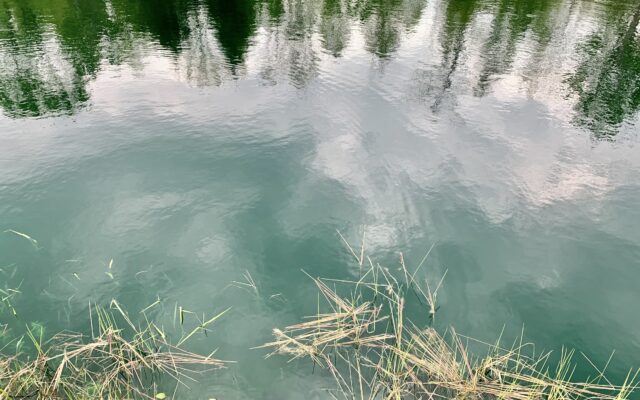
Here’s how you can have your own backyard fish pond
By Pete Warner, Bangor Daily News Staff
A friend recently mentioned that he was stocking the pond at his farm in Newburgh. Clear plastic bags containing oxygenated water and spunky, six-inch brook trout bobbed on the edge of the tiny pond as they became acclimated to the water temperature.
In each of the three bags were 20 fish waiting to take their first swim in the wild. Once the bags were opened, the trout wiggled their way into the pond and immediately began plucking bugs from the surface of the water.
The landowner theorized that within a year, the fish would be of sufficient size to catch and eat. A neighbor joined the procurement effort to enable his son to work on his fly-fishing skills.
The Maine Department of Inland Fisheries and Wildlife issues permits to residents who want to have a fish pond on their own property. Stocked with fish from private hatcheries and organizations such as the Penobscot County Soil and Water Conservation District, you could be casting in your own fishing hole.

BACKYARD FISH POND — The blue-green waters of a private pond in Newburgh recently became home for 60 brook trout raised by the Aroostook Band of Micmacs and sold by the Penobscot County Soil and Water Conservation District.
Although it’s too late for this year, planning for next year will have you permitted and ready for summer 2024. And having your own fish pond is relatively easy. All that’s needed is a large hole in the ground with clean, cool water and a permit from DIF&W. It costs $10 and is good for five years.
Since state law prohibits the introduction of fish into inland waters, the DIF&W reviews applications to make sure there is no danger of the fish getting into public waterways. Joe Overlock, the fisheries division management supervisor for DIF&W, said it’s a matter of ensuring invasive and unwanted species don’t spread to areas they shouldn’t be.
“These ponds, while they may not be public waters, are often connected to public waters,” Overlock said. “That’s really the reason for the concern and why we have the ability to manage for those risks.”
While the DIF&W does the permitting, the state does not manage or police private fish ponds, since its focus is on public fisheries.
There are three approved private hatcheries in Maine that are rearing trout. In addition to the Aroostook Band of Mi’kmaq, Shy Beaver Trout in Hollis (brook trout, rainbow trout, brown trout) and Spectrum Trout in South Paris (rainbows) also grow fish for private ponds.
Most permits are granted for brook trout. Some ponds, located in central or southern Maine — but not near watersheds that include habitat for federally protected Atlantic salmon, or adjacent to native fish populations — also might be approved for non-native fish such as brown trout or rainbow trout.
The Penobscot County conservation district has sold fish for trout ponds for more than 25 years. It has also helped other conservation districts from Piscataquis, Hancock, Franklin, Knox, Lincoln and Kennebec counties begin holding fish sales.
The brook trout sold by those districts are provided by the Mi’kmaq, who raise and transport them for distribution. The soil and water districts schedule specific dates when permitted residents can pick up the fish.
The relationship has flourished.
“It’s great for [the Mi’kmaq] and it’s been great for us because we’ve been able to keep that outreach opportunity for our counties,” said Amy Polyot, the district manager for Penobscot County conservation district.
Polyot initially contacted the Mi’kmaq 10 years ago after the business that previously handled the fish rearing and distribution closed. The arrangement has expanded significantly since then.
Only 1,500 trout were sold the first year, Polyot said. Now the organization sells more than 10,000 fish to private pond owners each year, she said. The brook trout cost $3.50 apiece and she said any revenue generated by the Penobscot County district is redirected to its education programs.
The agencies hold their sales in May and June.
Overlock said the state also pays special attention to preventing the introduction of invasive species such as goldfish and koi, which are illegal in any outdoor water in Maine, including a landscape pond.
“Those species pose a risk to our natural resources here,” Overlock said.
Maine law also does not allow live fish or fish eggs to be purchased on the internet and brought into the state so buying from an approved source is key.
DIF&W issues between 300 and 400 home fish pond permits each year.
“It’s a nice trend. It’s not the same people year after year all the time and we’re getting a lot of new people who find interest in it,” Polyot said.
People often stock a pond simply to provide family members with a fun activity. For some, it is already a longstanding tradition.
“I had a couple people who had been stocking because their kids were young and now the kids are in middle school and high school and they’re still doing it,” Polyot said.